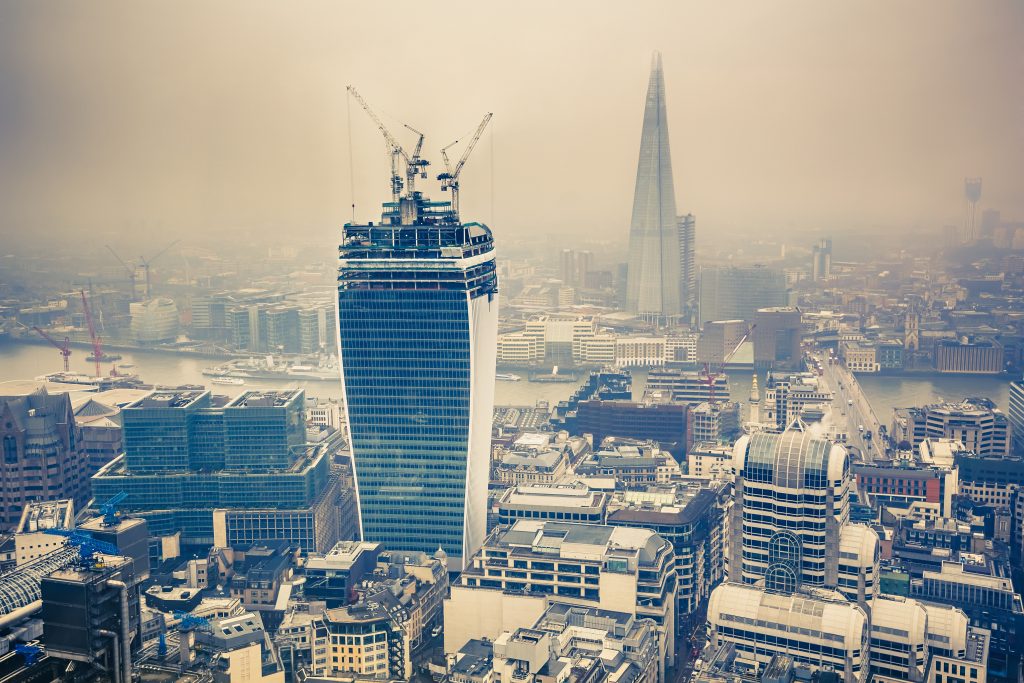Defra confirms 2016 air quality performance
37 of the UK’s 43 air quality monitoring zones failed to meet legal limits for annual mean emissions of nitrogen dioxide (NO2) during 2016, latest figures published by the government have confirmed.
This was among the headline figures in a report submitted to the European Commission which confirms that there was no overall improvement in compliance with the EU-set legal limit for NO2 pollution during the year.

London and South Wales were the two areas to exceed the hourly nitrogen dioxide mean objective
Other pollutants detailed in the report, which the UK is required to monitor in line with EU Directives on air quality include sulphur dioxide, fine particles (PM10 and PM2.5), ozone and carbon monoxide.
According to the report, six zones met the annual mean 40µg/m3 limit for NO2, which were Brighton/Worthing/Littlehampton, Blackpool, Preston, Highland, Scottish Borders and Northern Ireland — the same six areas that met the objective in 2015.
The remaining 37 zones had locations with measured or modelled annual mean NO2 concentration higher than the annual mean limit, mirroring the performance in 2015.
Two zones, London and South Wales exceeded the hourly nitrogen dioxide mean objective of 200ug3 on more than the 18 occasions allowed in one year.
The government has been under pressure to bring about improvements in NO2 levels, after having been taken to court over its proposals for improving air quality in November last year.
Plan
A revised plan to tackle NO2 pollution was published by the government in July, and gave over 20 councils a December 2018 deadline to agree proposals to tackle emissions in their area.
Commenting on the figures, a Defra spokesman said: “We have put in place a £3 billion plan to improve air quality and reduce harmful emissions.
“We will also end the sale of new diesel and petrol cars by 2040, and next year we will publish a comprehensive Clean Air Strategy which will set out further steps to tackle air pollution.
“We now have an opportunity to deliver a Green Brexit and improve environmental standards as we leave the EU.”
ClientEarth, the campaign group which led the legal case against the government over its air quality plan has claimed that the results will make ‘grim reading for ministers’.
ClientEarth chief executive James Thornton said: “We’re deeply saddened to see how little progress was made last year and we will keep up the pressure to tackle this public health crisis, so that all of us — particularly young children — are protected from harmful pollution.”
Particulates
For PM10 and PM2.5 particulate matter all zones were compliant with the 20µg/m3 annual mean limit value.
This is despite concerns raised yesterday by the Mayor of London that residents across the city are being exposed to harmful levels of fine particulates.
However, the EU limits are less stringent than recommended limits outlined by the World Health Organisation, which recommend a ceiling of 20µg/m3 for PM2.5.
Figures contained within the report suggest that the UK also met a target to reduce exposure to PM2.5 ahead of a 2020 deadline.
For ozone, there is a target value based on the maximum daily eight-hour mean, which all 43 zones met. There is also a long-term objective based on the maximum daily eight-hour mean. All but one of the 43 zones were above the long-term objective in 2016, the exception being Edinburgh.







 Network
Network